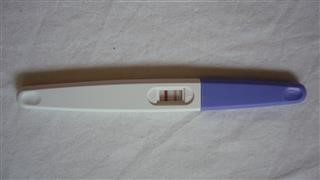The Infertility Org
Rate of Infertility
You found your source for total info and resources for Rate of Infertility on the Internet.
Assisted hatching: The embryologist opens a small hole in the outer membrane of the embryo, known as the zona pellucid. 42 Urinary luteinizing hormone kits indicate the midcycle luteinizing hormone surge that precedes ovulation by one to two days.
Intracytoplasmic sperm injection[edit] ICSI technique is used in case of poor semen quality, low sperm count or failed fertilization attempts during prior IVF cycles. Thus, an intravenous pyelogram must be performed once this diagnosis is made. Treatment The cost of infertility treatment is high [34].
More Information About Rate of Infertility

Even more Information Around Rate of Infertility
Check out our online medical courses and start now for free! These include: Infrequent menstrual periods: When a woman has regular menstrual periods, defined as regular cycles occurring every 21 to 35 days, this almost always indicates that she ovulates regularly. The fertilized embryo is then transferred to womb. The systems enhance the manual possibilities of the surgeon and his/her team, regarding the need of replacing static holding force during the intervention.[citation needed] Some of the features are:[citation needed] The stabilisation of the camera picture because the whole static workload is conveyed by the assistance system. In these cases the duration of the infertility is the best parameter by which to judge the chances of future natural conception; the longer the time of infertility then the sooner intervention should be considered.Summary Infertility is a term doctors use if a man hasn't been able to get a woman pregnant after at least one year of trying. Human menopausal gonadotropins Crowe discovered that the gonads were under the control of the anterior hypophysis. [175] Zondek and Aschheim discovered that FSH and LH were responsible for the development of the gonads in immature animals and confirmed Crowe's work. [135, 136] In the 1930s, ovulation induction was attempted by using gonadotropins from a mare, but its use was discontinued because of the development of antibodies. [176, 177] Borth et al demonstrated the effect of FSH and LH extracted from menopausal urine. [178, 179] Gemzell reported the first ovulation induction using human pituitary gonadotropin in 1958, and the first pregnancy was reported in 1960. [180, 181] Lunenfeld reported preliminary results using hMG; however, in 1963, it was definitely established as a real ovulation induction agent. [182, 183, 184] Human menopausal gonadotropin (hMG [eg, Repronex, Menopur]) contains 75 U of FSH and 75 U of LH per mL, although the concentration may vary among batches (ranges from FSH at 60-90 U and LH at 60-120 U).
Here are Some Even more Information on Yale Infertility Center
Excess cortisol may be produced by adrenal hyperplasia, adenomas, carcinoma, or lung tumors. The cause of sterility can also be found in the tubes. In order to accomplish this, the semen is washed with a solution safe to sperm and eggs, and then centrifuged to separate motile sperm from immotile sperm and other cells.
Even more Information Around Infertility Blog Canada
The man is advised not to ejaculate for 2 to 3 days before giving the semen sample for evaluation. Fertility: assessment and treatment for people with fertility problems. Hyperprolactinemia: If prolactin levels are high, and the woman is not pregnant or breastfeeding, it may affect ovulation and fertility. Many more couples, however, experience involuntary childlessness for at least one year: estimates range from 12% to 28%.[4] Male infertility is responsible for 20–30% of infertility cases, while 20–35% are due to female infertility, and 25–40% are due to combined problems in both parts.[2][5] In 10–20% of cases, no cause is found.[5] The most common cause of female infertility is ovulatory problems, which generally manifest themselves by sparse or absent menstrual periods.[6] Male infertility is most commonly due to deficiencies in the semen, and semen quality is used as a surrogate measure of male fecundity.[7] Women who are fertile experience a natural period of fertility before and during ovulation, and they are naturally infertile for the rest of the menstrual cycle. Prior to its conception, laparoscopy was a surgical approach with very few applications, mainly for purposes of diagnosis and performance of simple procedures in gynecologic applications.[citation needed] The first publication on modern diagnostic laparoscopy by Raoul Palmer appeared in 1947,[36] followed by the publication of Hans Frangenheim and Kurt Semm, who both practised CO 2 hysteroscopy from the mid-1970s.[37] In 1972, Clarke invented, published, patented, presented, and recorded on film laparoscopic surgery, with instruments marketed by the Ven Instrument Company of Buffalo, New York.[38] In 1975, Tarasconi, from the Department of Ob-Gyn of the University of Passo Fundo Medical School (Passo Fundo, RS, Brazil), started his experience with organ resection by laparoscopy (Salpingectomy), first reported in the Third AAGL Meeting, Hyatt Regency Atlanta, November 1976 and later published in The Journal of Reproductive Medicine in 1981.[39] This laparoscopic surgical procedure was the first laparoscopic organ resection reported in medical literature. Damaged Sperm Ducts: Seven percent of infertile men cannot transport sperm from their testicles to out of their penis. This pathway may be blocked by a number of conditions: · A genetic or developmental mistake may block or cause the absence of one or both tubes (which transport the sperm from the testes to the penis). · Scarring from tuberculosis or some STDs may block the epididymis or tubes. · An elective or accidental vasectomy may interrupt tube continuity. Wie Oath und unsere Partner Ihnen bessere Werbung anbieten Um Ihnen insgesamt ein besseres Nutzererlebnis zu bieten, möchten wir relevante Anzeigen bereitstellen, die für Sie nützlicher sind. 25 mg Lupron Depot IM q3mo for up to 6 months) Nafarelin acetate (eg, Synarel 400 mcg intranasal qd; not to exceed 6 months) Goserelin acetate (eg, Zoladex 3.
Previous Next
See also
Infertility Who
Infertility Birth Announcements
Infertility Physiotherapy Management